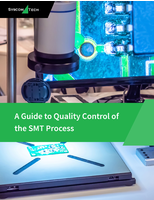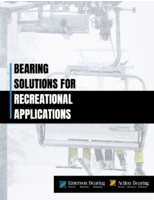New NDT Standards focus on aerospace composites.
Press Release Summary:
Guide for Nondestructive Testing of Polymer Matrix Composites Used in Aerospace Applications (ASTM E2533) helps engineers select appropriate nondestructive testing methods to examine and characterize aerospace composites. Also available, Practice for Radiologic Examination of Flat Panel Composites and Sandwich Core Materials Used in Aerospace Applications (ASTM E2662) provides process control requirements for film and digital radiography of aerospace composite panels.
Original Press Release:
Aerospace Composites are Subject of New ASTM Nondestructive Testing Standards
W. CONSHOHOCKEN, Pa., October 7, 2009-A series of standards on nondestructive inspection and examination of aerospace composites has been developed under the jurisdiction of ASTM International Committee E07 on Nondestructive Testing.
Several years ago, with impetus and input from representatives of the National Aeronautics and Space Administration, a task group on NDE for Aerospace Composites was formed under Subcommittee E07.10 on Emerging NDT Methods. The task group, chaired by George Matzkanin from Texas Research Institute Austin, was established to foster the development of standards for NDE of aerospace composites. A recently published standard, ASTM E2533, Guide for Nondestructive Testing of Polymer Matrix Composites Used in Aerospace Applications, was developed under the guidance of task group and E07.10 member Jess Waller, NASA White Sands Test Facility. This guide helps engineers select appropriate nondestructive testing methods to examine and characterize aerospace composites.
In addition to ASTM E2533, several standard practices have been developed and published to document and establish control requirements of current established industry practices so that these standards can be specified in contracts. One such practice is the new ASTM standard ASTM E2662, Practice for Radiologic Examination of Flat Panel Composites and Sandwich Core Materials Used in Aerospace Applications, developed under the guidance of task group member John Ellegood, Lockheed Martin Space Systems Co. This standard was developed under the jurisdiction of Subcommittee E07.01 on Radiology (X and Gamma) Method.
ASTM E2662 provides process control requirements for film and digital radiography of aerospace composite panels. "Using ASTM E2662 will improve accuracy and reliability of radiographic examinations for these low density structures," says Ellegood, a staff quality engineer and level 3 radiographer. "Often, examinations are not performed at optimal levels due to inadequate experience and lack of requirements."
Ellegood, who also serves on the Leadership Committee of the Federal Working Group on Industrial Digital Radiography, says that NASA, the U.S. Department of Defense and manufacturers of aerospace and aircraft structures using lightweight composite panels will be the primary users of ASTM E2662.
Three additional practices developed under the guidance of the task group and published earlier are:
The task group is now moving forward with the development of proposed guides and practices for the inspection/examination of more complex composite components, such as composite overwrapped pressure vessels. All interested parties, including engineers working in nondestructive testing, materials and aerospace, are welcome to contribute to the ongoing development of these proposed standards.
ASTM International standards can be purchased from Customer Service (phone: 610-832-9585; service@astm.org) or at www.astm.org. For technical information about ASTM E2533, contact Jess Waller, GeoControl Systems, NASA White Sands Test Facility, Las Cruces, N.M. (phone: 575-524-5249, jess.m.waller@nasa.gov). For technical information about ASTM E 2662, contact John Ellegood, Lockheed Martin Space Systems Co., Denver, Colo. (phone: 303-977-5755; john.p.ellegood@lmco.com). Committee E07 will meet Jan. 24-28, 2010, in Plantation, Fla.
ASTM International welcomes and encourages participation in the development of its standards. ASTM's open consensus process, using advance Internet-based standards development tools, ensures worldwide access for all interested individuals. For more information on becoming an ASTM member, please contact George Luciw, ASTM International (phone: 610-832-9710; gluciw@astm.org).
Established in 1898, ASTM International is one of the largest international standards development and delivery systems in the world. ASTM International meets the World Trade Organization (WTO) principles for the development of international standards: coherence, consensus, development dimension, effectiveness, impartiality, openness, relevance and transparency. ASTM standards are accepted and used in research and development, product testing, quality systems and commercial transactions around the globe.




